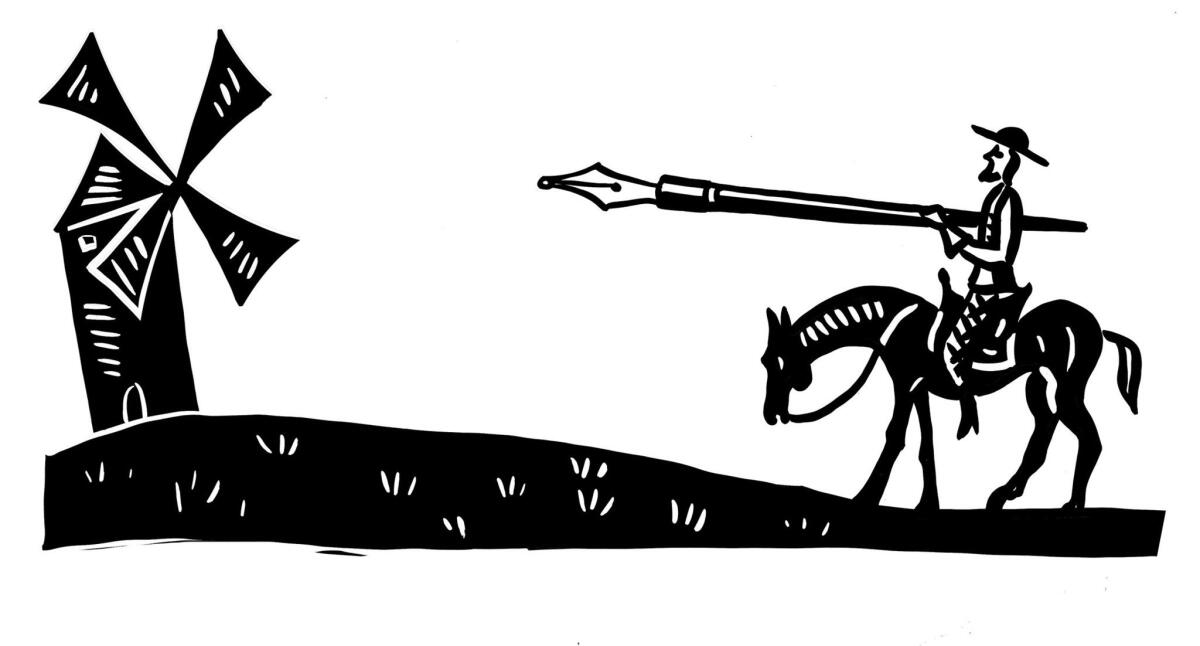Opinion: Come November, what’s a fringe voter to do in this top-two system?

- Share via
Four years ago California voters approved Proposition 14, which scrapped the existing primary election system for most elected offices and replaced it with the top-two system we used in June. It was billed as a way to force Democratic and Republican politicians to cater to the center of the broad electorate rather than to the extremes of their own parties. But in effect, Prop. 14 has disenfranchised me and tens of thousands of other voters.
Let me explain how.
Under the old primary system, party members voted for who they thought would be their best standard-bearer in the fall general election (the history of that process is available here). So the November ballot (usually) had a candidate for most offices on each party line, from the American Independents on the far right through the relatively centrist Republicans and Democrats to the “feminist socialist” Peace and Freedom Party on the far left (the number of ballot-qualified parties can vary by election cycle based on registration and vote results).
Since relatively few people vote in primaries, the winning candidates weren’t a true reflection of the party members’ will – just the will of those who voted, obviously enough. Particularly in the two major parties, those primary voters tended to be activists whose power was amplified simply because less-engaged party members failed to vote.
So Republicans who canted to the right (especially on social issues) did best; Democrats who appealed to the left similarly did better. Not always, mind you, but that’s the broad drift (there often weren’t contested primaries in the fringe parties). Yet the general electorate – of which nearly one in four voters (and growing) belongs to no party – tends to be left of center, at least in California.
The thinking behind Prop. 14 was that if all candidates from all parties compete in one primary for each office, that would winnow the final general election list down to the two candidates with the broadest appeal.
Under the old system, unaffiliated voters (like me) usually didn’t get to vote in the party primaries, but weighed in on the party choices in the general election. Under the current top-two system, we get to vote in the primary and have a voice in selecting the final contenders in the general election, something we didn’t have before, and that’s a positive step.
But then the voting booth door shuts, especially for those of use whose views are far from the center.
This November there are eight statewide offices up for election, one of which – superintendent of public education – is nonpartisan. The survivors of the June primary in the other seven races are all Democrats or Republicans. In fact, each race pits a Democrat against a Republican. Fair enough, since that’s how the primary results fell. But that means many of us have no one we feel like supporting in some of the November races.
That’s not likely to change in future races, either. It’s hard to see how a third-party candidate will be able to break that major-party stranglehold in the primaries and thus be a candidate in the general election - the one that matters most.
History is a guide. Third parties rarely have drawn broad enough support to win statewide elections. Hiram Johnson won the governorship in 1910 as a Republican but won re-election in 1914 as a Progressive, also known as the Bull Moose Party, formed by former President Teddy Roosevelt for his unsuccessful 1912 challenge of incumbent – and former protégé – President William Howard Taft. In fact, Johnson was Roosevelt’s running mate that cycle; Democrat Woodrow Wilson won the election (Socialist Eugene V. Debs won 6% of the vote).
Other than that spurt of progressivism, since the 1870s, California’s statewide elected officials have been Democrats or Republicans. Even author Upton Sinclair switched his affiliation from Socialist to Democrat to run for governor in 1934 on his Depression-era End Poverty in California platform, which failed.
So the two-party fix, essentially, is in. Barring a surprise radical or reactionary upheaval, it’s hard to envision a scenario in which a third party candidate will be on a November ballot. And while a candidate can mount a write-in campaign in the primary, write-ins are not allowed in the general election. If you scribble on your ballot the name of someone other than the two anointed candidates, the vote isn’t counted.
So come November, for those who tend to vote out of the mainstream, the options are Tweedledum and Tweedledee.
Over the years I’ve cast my share of ballots for fringe candidates, sometimes out of clear support, but also occasionally out of protest against the major party candidates. That statement has now been blunted by a system that mathematically limits the general election to the two major parties. Even though my past protest votes never affected the outcome of a race, I at least came away with a sense of having said “neither” to the major party offerings, and knew that my disapproval of the major parties was recorded in the general election canvass.
Come November, my “neither” vote will have to stay in my pocket, which makes me less interested in most of the races. After all - and retooling an old joke - why vote for a major party candidate? It just encourages them.
Follow Scott Martelle on Twitter @smartelle
More to Read
A cure for the common opinion
Get thought-provoking perspectives with our weekly newsletter.
You may occasionally receive promotional content from the Los Angeles Times.










